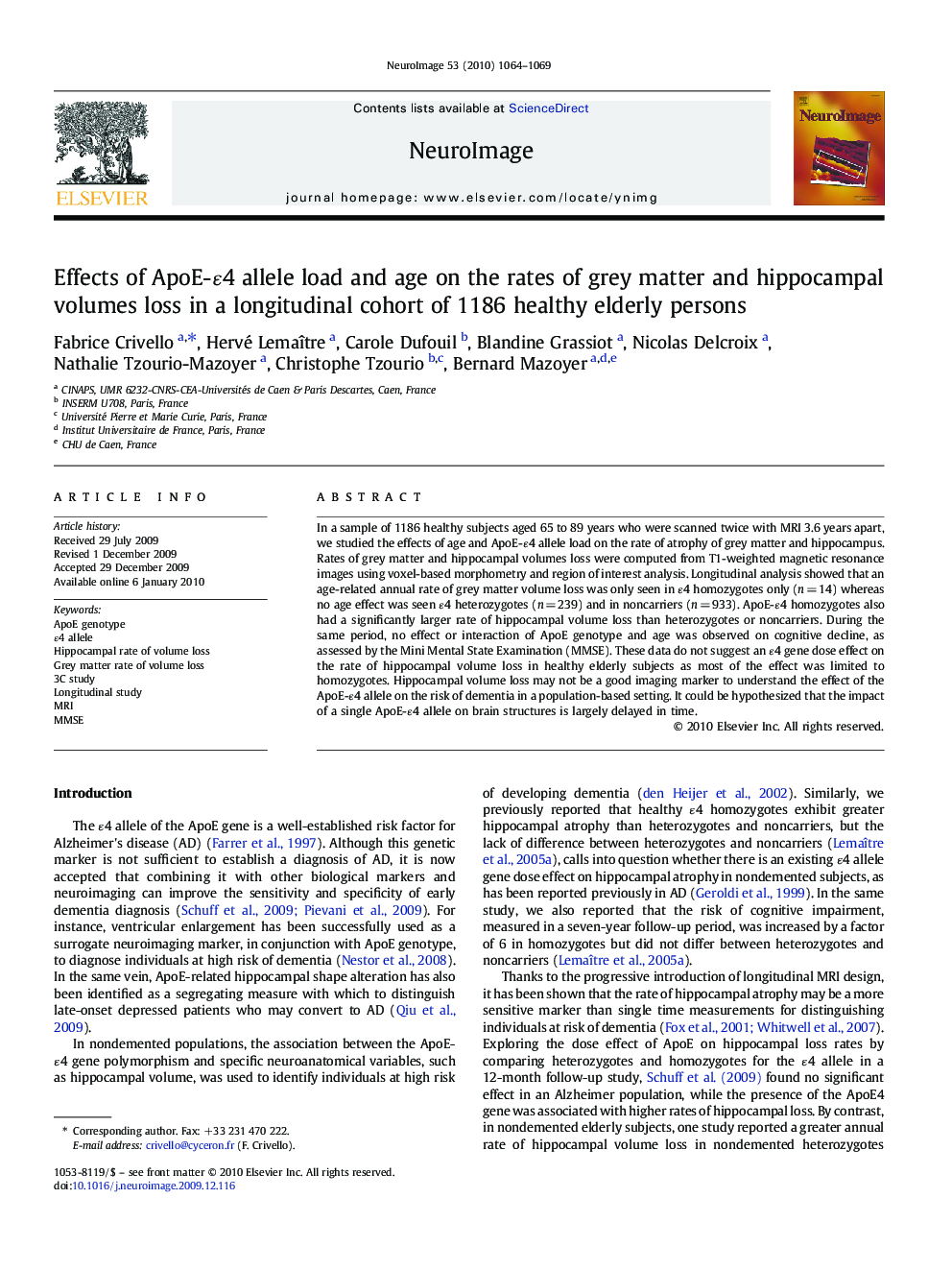| Article ID | Journal | Published Year | Pages | File Type |
|---|---|---|---|---|
| 6034257 | NeuroImage | 2010 | 6 Pages |
Abstract
In a sample of 1186 healthy subjects aged 65 to 89 years who were scanned twice with MRI 3.6 years apart, we studied the effects of age and ApoE-É4 allele load on the rate of atrophy of grey matter and hippocampus. Rates of grey matter and hippocampal volumes loss were computed from T1-weighted magnetic resonance images using voxel-based morphometry and region of interest analysis. Longitudinal analysis showed that an age-related annual rate of grey matter volume loss was only seen in É4 homozygotes only (n = 14) whereas no age effect was seen É4 heterozygotes (n = 239) and in noncarriers (n = 933). ApoE-É4 homozygotes also had a significantly larger rate of hippocampal volume loss than heterozygotes or noncarriers. During the same period, no effect or interaction of ApoE genotype and age was observed on cognitive decline, as assessed by the Mini Mental State Examination (MMSE). These data do not suggest an É4 gene dose effect on the rate of hippocampal volume loss in healthy elderly subjects as most of the effect was limited to homozygotes. Hippocampal volume loss may not be a good imaging marker to understand the effect of the ApoE-É4 allele on the risk of dementia in a population-based setting. It could be hypothesized that the impact of a single ApoE-É4 allele on brain structures is largely delayed in time.
Related Topics
Life Sciences
Neuroscience
Cognitive Neuroscience
Authors
Fabrice Crivello, Hervé Lemaître, Carole Dufouil, Blandine Grassiot, Nicolas Delcroix, Nathalie Tzourio-Mazoyer, Christophe Tzourio, Bernard Mazoyer,
